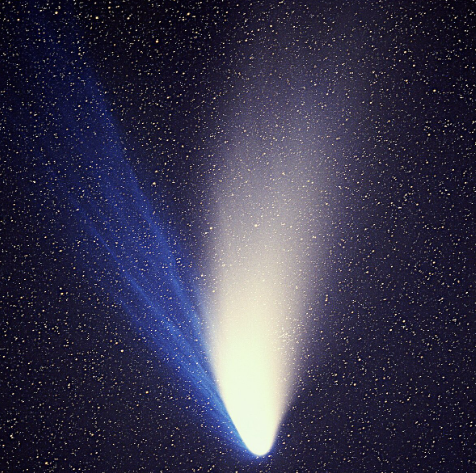
Asteroids Illuminate Earth’s Skies this week, One in Close Encounter
Asteroids Illuminate Earth’s Skies, While One Safely Soars By
NASA‘s vigilant eye is trained on the cosmos, and while there’s no immediate danger of collision, the celestial theater is set to dazzle Earth-bound observers this week!
Prepare for an awe-inspiring display as Earth prepares to witness a procession of five asteroids, one of which rivals the size of a FIFA-accredited football stadium. Leading the celestial parade is the formidable Asteroid 2008 OS7, a colossal behemoth measuring approximately 890 feet across, initially detected by NASA’s vigilant gaze back in 2008. On February 2nd, this cosmic giant will make its grand appearance, soaring past Earth at a distance of approximately 1.77 million miles—an astronomical closeness that captures the imagination.

NASA’s Jet Propulsion Laboratory (JPL) maintains a watchful vigil, meticulously tracking the trajectory of these celestial wanderers through its Asteroid Watch website. While Asteroid 2008 OS7 poses no imminent threat of collision, its proximity is enough to evoke a sense of wonder and contemplation.
Yet, Asteroid 2008 OS7 is merely the vanguard of this celestial procession. Joining the cosmic ballet are four other asteroids, each with its own unique character and magnitude. From the size of a modest house to the stature of a towering edifice, these cosmic visitors promise to captivate observers with their ethereal presence.

Mark your calendars as the cosmic rendezvous unfolds. On Sunday, Asteroid 2024 AU4, spanning approximately 260 feet in diameter, will gracefully traverse the heavens at a comfortable distance of 3.92 million miles from our celestial abode. Following closely on Tuesday is Asteroid 2007 EG, akin in size to a commercial airplane, drawing near at a distance of 3.8 million miles.
Thursday heralds the arrival of two more celestial guests. Asteroid 2024 BY, resembling a diminutive house in the cosmic tapestry, will streak past at a distance of 1.57 million miles, while its counterpart, Asteroid 2003 BM4, of similar airborne proportions, will glide by at a distance of 2.06 million miles.

To provide context to these cosmic distances, consider that the average span between Earth and its lunar satellite is approximately 239,000 miles, while the vast expanse between Earth and the sun stretches to around 93 million miles, as affirmed by NASA’s celestial metrics.
While most near-Earth objects (NEOs) maintain a safe distance from our planet, some warrant closer scrutiny. Among these are the potentially hazardous asteroids (PHAs), formidable cosmic entities exceeding 500 feet in size and capable of approaching within 4.7 million miles of Earth’s orbit.
One such celestial titan is Apophis, dubbed the ‘God of Chaos,’ a colossal rock measuring a staggering 370 yards across. In a testament to scientific curiosity and exploration, NASA recently launched OSIRIS-APEX to study Apophis, poised to undertake a breathtakingly close encounter with Earth at a mere 20,000 miles in 2029—a remarkable event unprecedented in recorded history.
As humanity’s gaze turns skyward, these celestial encounters serve as poignant reminders of the dynamic interplay between Earth and the cosmos, inviting contemplation of our place within the vast expanse of the universe. So, seize the opportunity to witness this celestial spectacle, for while the asteroids pose no immediate threat, their passage offers a glimpse into the majestic beauty and unfathomable mysteries of the cosmos.
As we marvel at the cosmic ballet unfolding before our eyes, it’s essential to reflect on the broader implications of these celestial phenomena. While the asteroids’ graceful passage presents a captivating spectacle, it also underscores the ongoing efforts to comprehend and mitigate potential threats from near-Earth objects.
NASA’s vigilant monitoring of these cosmic wanderers serves as a testament to humanity’s collective resolve to safeguard our planet from potential impacts. Through advanced tracking systems and innovative technologies, scientists endeavor to identify and assess the trajectory of asteroids, providing crucial insights into their behavior and potential hazards.
The classification of potentially hazardous asteroids (PHAs) highlights the need for sustained vigilance and preparedness in mitigating the risks posed by such cosmic intruders. By identifying PHAs and closely monitoring their trajectories, scientists can develop strategies to mitigate potential threats, ranging from asteroid deflection techniques to early warning systems.
For the latest updates-click here.


